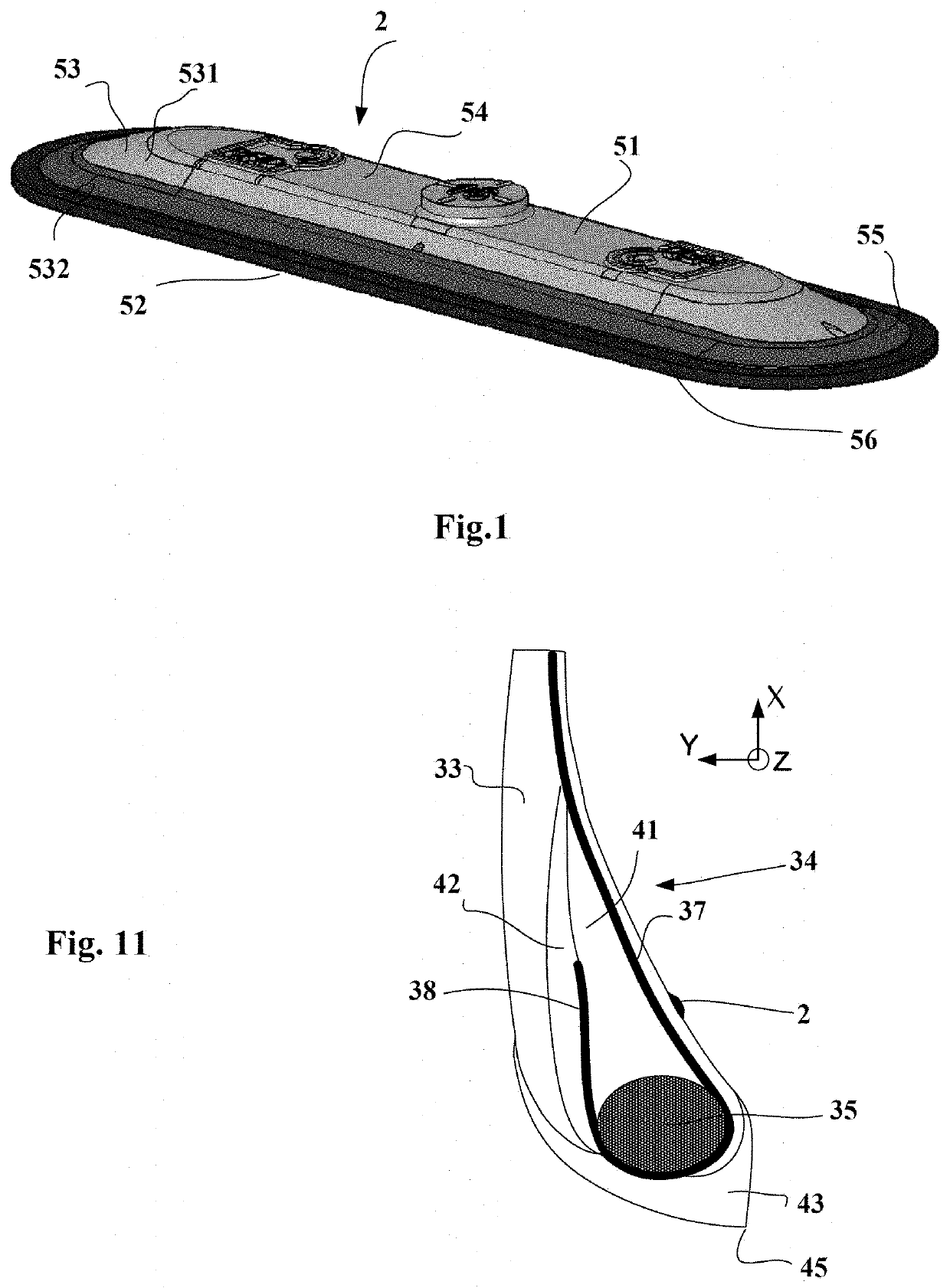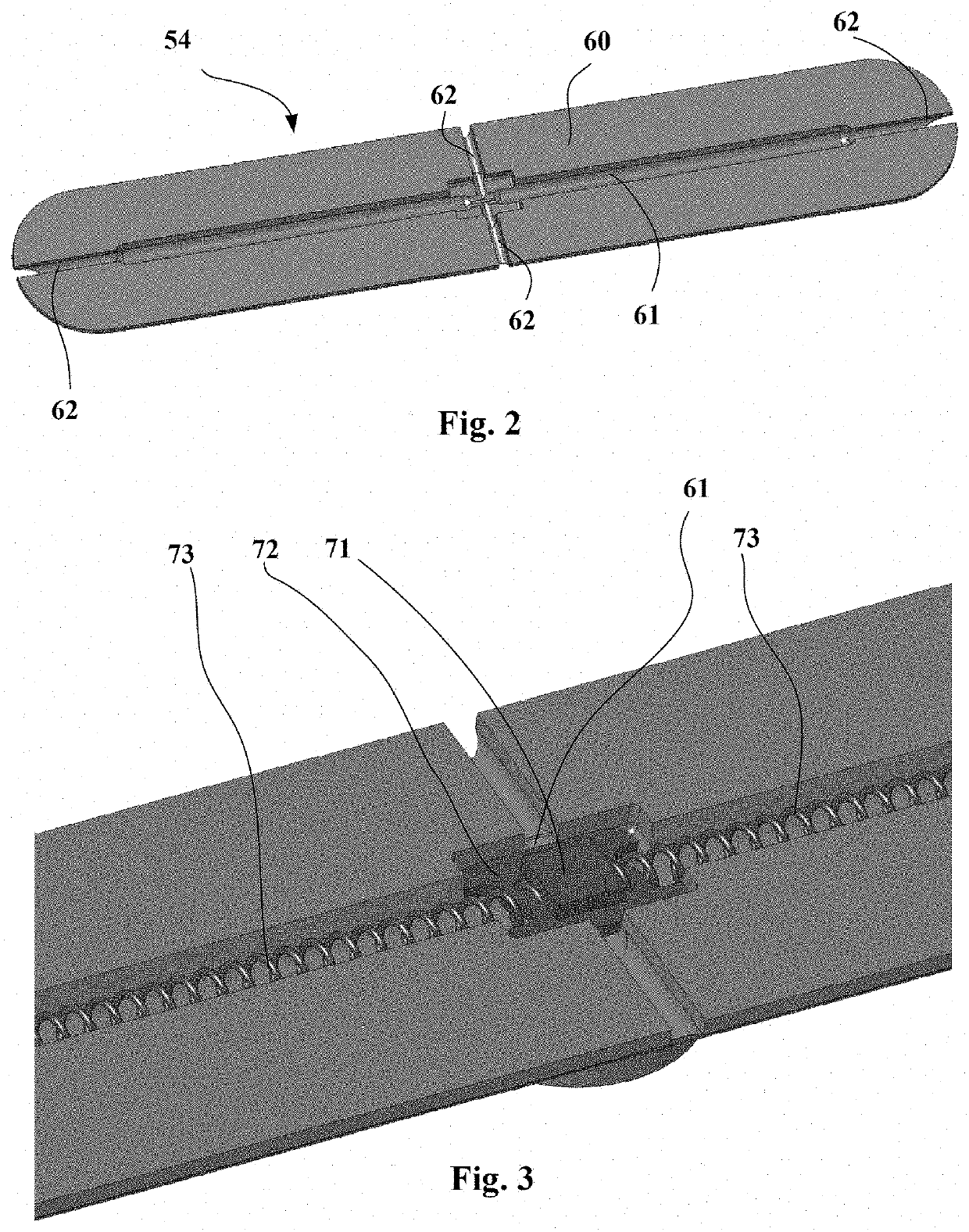Method for manufacturing a patch equipped with a radiofrequency transponder and tire comprising such a patch
- Summary
- Abstract
- Description
- Claims
- Application Information
AI Technical Summary
Benefits of technology
Problems solved by technology
Method used
Image
Examples
Embodiment Construction
[0055]FIG. 1 is a perspective view of a patch 2 according to the invention.
[0056]This patch is of elongate shape and has a substantially planar upper surface 51, a substantially planar lower surface 52 intended to be fastened to the wall of a tyre, and a skirt 53 connecting the exterior outlines of the upper and lower surfaces. The profiles of the skirt 53 in any normal cross section are inclined relative to the direction of the lower surface by an angle of about 9 to 15° in order to guarantee a good mechanical attachment of the patch to the wall of the tyre.
[0057]It may be seen in FIG. 1 that this patch 2 is composed of three main portions. A first layer 54 that comprises the upper surface 51 and the exterior portion 531 of the skirt 53, a second layer 55 that comprises the lower portion 532 of the skirt 53 and a layer 56 of a cold-vulcanizing bonding rubber such as Gray gum sold by Tech International. This bonding-rubber layer has a thickness of about 1 mm.
[0058]The materials of t...
PUM
| Property | Measurement | Unit |
|---|---|---|
| Time | aaaaa | aaaaa |
| Distance | aaaaa | aaaaa |
| Distance | aaaaa | aaaaa |
Abstract
Description
Claims
Application Information
 Login to View More
Login to View More - R&D
- Intellectual Property
- Life Sciences
- Materials
- Tech Scout
- Unparalleled Data Quality
- Higher Quality Content
- 60% Fewer Hallucinations
Browse by: Latest US Patents, China's latest patents, Technical Efficacy Thesaurus, Application Domain, Technology Topic, Popular Technical Reports.
© 2025 PatSnap. All rights reserved.Legal|Privacy policy|Modern Slavery Act Transparency Statement|Sitemap|About US| Contact US: help@patsnap.com



